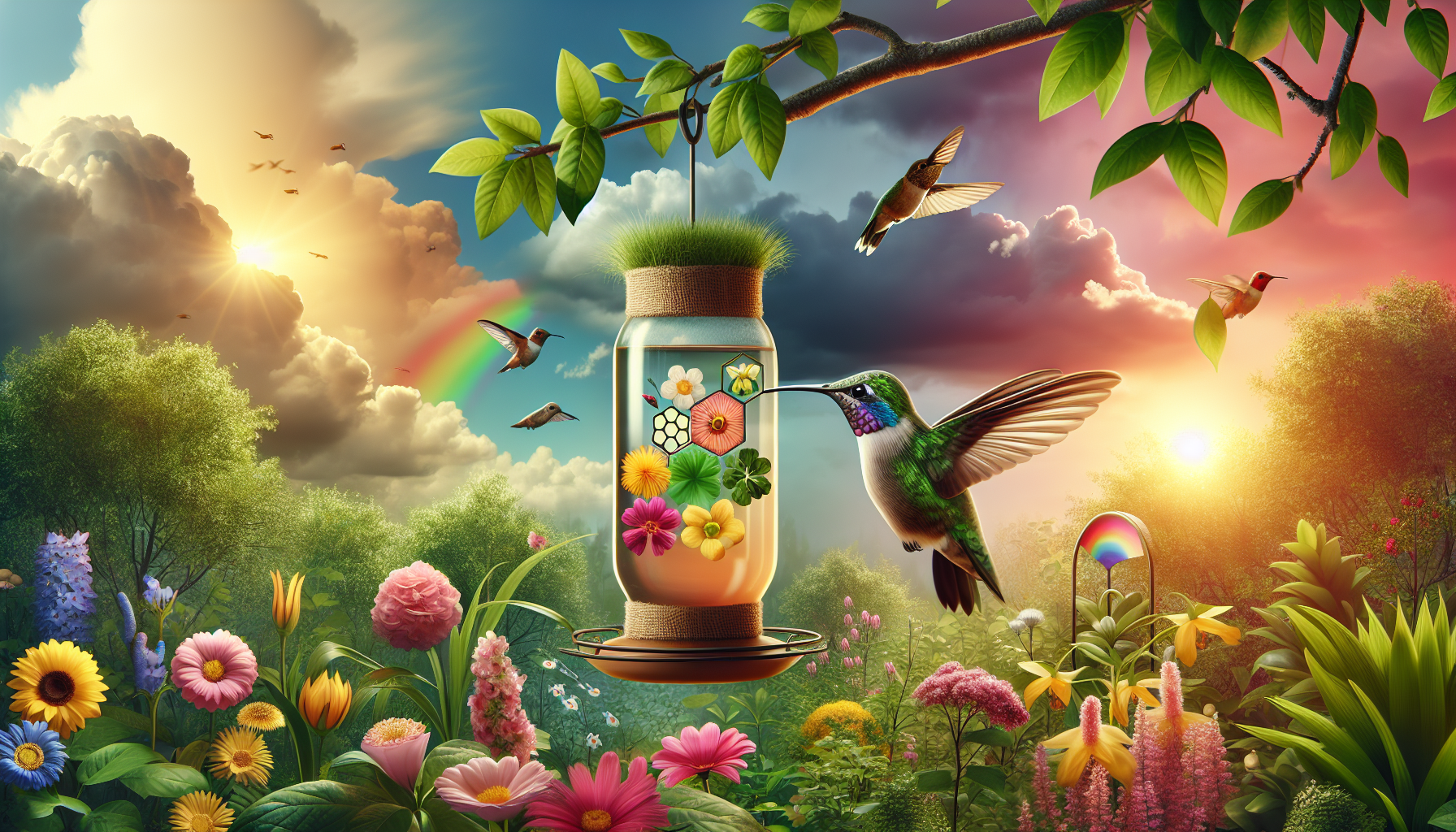Hummingbirds are stunning creatures that brighten our gardens with their iridescent colors and quick, darting movements. Despite their miniature size, these creatures require a significant amount of energy to sustain their frenzied flights. As a landscape architect, I’ve discovered that one of the most effective ways to aid these birds is by providing hummingbird feeders.
Mid-summer changes in hummingbird feeding behavior
Although many hummingbirds frequent feeders throughout the year, you might notice that fewer hummingbirds visit your feeders from June through mid-summer. The reason for this drop in feeder visits is multifaceted and primarily includes changes in the available natural food sources and the birds’ reproductive cycles.
Hummingbirds primarily feed on nectar, and during the summer months, the abundance of blooming flowers provides them with plenty of natural sources. They also supplement their nectar diet with protein from small insects. As the flowers bloom and insects become more plentiful, hummingbirds tend to rely less on artificial feeders. Additionally, during the breeding season, which usually falls in the summer, hummingbirds are often occupied with courtship, nesting, and care of their hatchlings, resulting in decreased visits to the feeders.
Keeping your hummingbird feeders attractive
While it is quite natural for the number of visits to the feeder to lessen during mid-summer, it’s not an excuse to neglect your feeders. Helping hummingbirds thrive means providing consistent artificial nectar, especially during times when natural food sources are less plentiful. There are several ways to make your feeders more attractive to hummingbirds.
Freshness of the nectar is crucial. Replacing the nectar every two days ensures that the feeder is not only attractive but also healthy for the hummingbirds. Regular cleaning of the feeders is equally important to prevent the growth of harmful fungi and bacteria.
The placement of the feeders also plays a significant role. Creating more shaded areas for the feeders can keep the nectar cool and fresh longer, making it more appealing to the birds. If possible, place the feeder near flowering plants, as this may attract hummingbirds in search of nectar.
Adopting a sustainable approach to hummingbird feeding
Another notable point is the importance of adopting an eco-friendly, sustainable approach to feeding hummingbirds. Instead of using store-bought nectar that may contain additives and preservatives, consider making homemade nectar. A simple recipe includes mixing one part plain white sugar with four parts water. This homemade nectar closely mimics the concentration of natural flower nectar, providing a sustainable and healthier option for the hummingbirds.
The slight dip in hummingbird feeder visits during mid-summer should not discourage you. Keep in mind that your hummingbird feeder provides a vital supplement to these spectacular creatures. Being alert to their needs and adapting your feeding practices accordingly ensures that your garden remains a hummingbird haven, regardless of the season.
Attracting hummingbirds is more than just about adding beauty to our surroundings. It inspires in us a sense of community, of symbiosis with nature – an important quest in these challenging times. Let us continue to nurture them by focusing on sustainable feeding practices that resonate with the rhythms of their natural lives.
Emma Johnson is a passionate and insightful writer specializing in the house and garden niche, bringing over a decade of experience to her readers. At the youthful age of 34, Emma has already established herself as a leading voice in home improvement, landscaping, and interior design. Her journey began with a degree in Landscape Architecture from the University of Georgia, followed by years of hands-on experience working with renowned landscaping firms across the country.
Emma’s writing career took off when she started sharing her unique ideas and eco-friendly gardening tips on her personal blog. Her ability to blend practical advice with aesthetic design quickly garnered attention, leading to her current position as a featured columnist for a prominent online news site.
Dedicated to sustainable living and innovative design, Emma’s articles offer a wealth of knowledge, from DIY home projects to the latest trends in garden technology. Her work not only enlightens homeowners looking to enhance their living spaces but also inspires a deeper appreciation for the environment.
When she’s not writing or experimenting in her own garden, Emma enjoys mentoring young designers and participating in community beautification projects. Her contributions extend beyond her written work, embodying her commitment to making the world a more beautiful and sustainable place, one home at a time.

